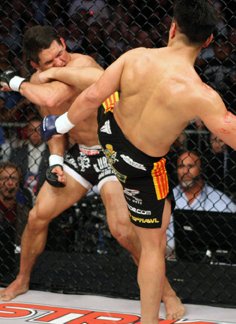Around a decade ago, I attended a seminar with a famous Shanxi Xingyiquan master. Aggressive and direct, Xingyi is one of the few boxing arts known to have been used in preparation for organized warfare. Its emphasis on straightforward practicality was combined with enough subtlety to earn a reputation as one of the original Chinese “internal” martial arts.
After the seminar was over, I bought a T-shirt to commemorate the occasion. According to the text on the back of my new shirt, I was now an unofficial member of “The International Association of Defensive Martial Arts”.
Nevermind that we had spent the last 6 hours eviscerating each other with spears, sabers and bayonets, metaphorically speaking. Nevermind that, according to the principles of Xingyi and all other respectable combat arts, the use of purely defensive techniques is forbidden. Despite all this, in public, we were expected to present ourselves as practitioners of self-defense. Not offense.


